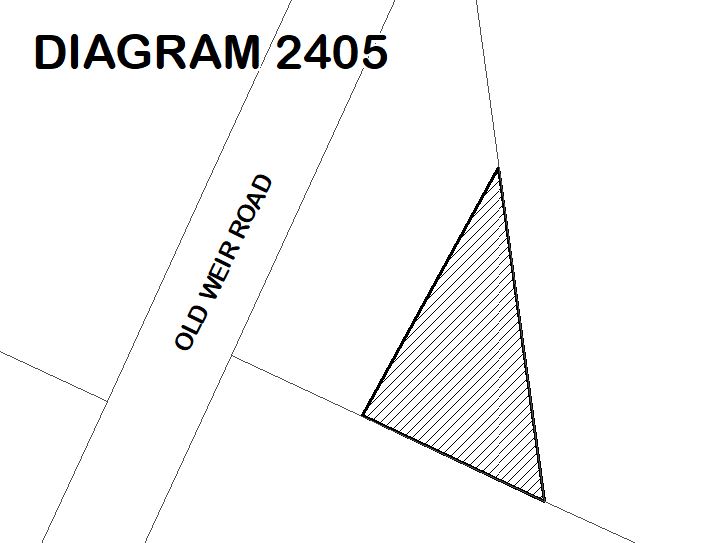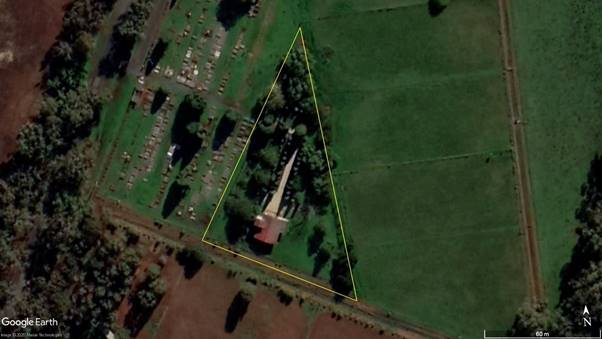ITALIAN OSSARIO
21 OLD WEIR ROAD, MURCHISON VIC 3610
-
Add to tour
You must log in to do that.
-
Share
-
Shortlist place
You must log in to do that.
- Download report


















Statement of Significance
What is significant?
How is it significant?
Why is it significant?
-
-
ITALIAN OSSARIO - History
World War II Internment and POW Camps In September 1939, Australia joined Great Britain in declaring war on Germany and immediately passed legislation to enable the internment of civilians resident in Australia who might represent a threat to national security. Over 15,000 civilians were interned in Australia during World War II, approximately half were civilians who were living in Australia, and the other half were living in other Allied territories when war broke out. The latter were imprisoned overseas and transported to Australia for internment. They included men, women and children, mainly German, Italian and Japanese, and were interned because their nationality posed a security risk. Internees ranged in age from babies, some of whom were born in internment camps, to the elderly. In addition to the internees, there were about 7,000 Prisoners of War who were detained in Australia as enemy servicemen. They were members of the armed forces of Germany, Italy and Japan, who were captured and transported to Australia. A number of purpose-built internment camps, as well as Prisoner of War camps, were quickly constructed in Australia to the terms of the Geneva Convention, and a group of seven camps (four internment and three Prisoner of War camps) were established near Tatura. These comprised the largest group of camps in Australia. The individual camps were known as Dhurringile Mansion, Camps 1-4 and Camp 13 and an associated wood cutting camp at Graytown. In 1939 the Commonwealth government negotiated with the owner of a property known as Dhurringile (VHR H1554), located on the Murchison-Tatura Road in northern Victoria, for use as an internment camp for German and Italian internees. On completion of Camp 1 nearby, these internees were transferred from this 1870s two storey brick mansion and Dhurringile was taken up by the army for use as a Prisoner of War camp for German officers in 1941 The seven camps held in excess of 8,000 people to which a contingent of 2,700 guards and other personnel was attached. The four camps holding civilian internees were unique among Australia's places of detention. No other camps held families, nor did they include such a diversity of backgrounds in terms of nationalities, political convictions, faiths, class and education. The other three Tatura camps accommodated Prisoners of War. By 1942 there were 1,392 Italian POWs and 379 Italian internees at the camps. Internees and Prisoners of War lived in close proximity for up to seven years. When a death occurred, the body was interred at the local cemetery and a funeral was attended by close friends and family and an armed guard. A full military funeral was held for a member of the armed forces. After the end of World War II, the Australian War Graves Commission established war cemeteries in Australia for German and Japanese citizens who had died whilst imprisoned in Australia, including civilians. A Japanese War Cemetery was established at Cowra, where a large number of Japanese had died during an attempted breakout in August 1944, and a German War Cemetery at Tatura, in the vicinity of the seven internment camps. An Italian War Cemetery was also established at nearby Murchison Cemetery where a number of Italian Prisoners of War and internees had been buried during World War II. This was the initiative of a local Italian resident and the Italian Consulate, rather than the Australian War Graves Commission. Most of the internees grew to appreciate the Australian environment, despite the deprivations of camp life. After their release at the end of World War II, most prisoners were sent home, however many returned to live in Australia. The internment camps were dismantled after World War II and little physical evidence of these camps remains at the various sites. Italian Ossario, Murchison Almost 18,500 Italian prisoners of war were detained in Australia during World War II. Of these, almost 100 Italian military men died along with 36 Italian civilians who were interned as enemy aliens. They were buried at the camps where they were held or in nearby cemeteries. Many of the internees who were released from the camps near Tatura toward the end of World War II remained in the area or returned to the Goulburn Valley region attracted by the fertile land and, in the words of one local historian, the established orchards, market gardens and wineries that formed a link to the lifestyle of their homelands. By the mid-1950s a strong and close knit Italian community had formed. Italian POWs and internees from the nearby Tatura and Rushworth camps were buried at Murchison Cemetery and in May 1956 the Associazione Nazionale ex-Combattenti e Reduci Italiani (ANCRI) arranged the first pilgrimage from Italy and Victoria to Murchison to visit the Italian graves. ANCRI, which had been formed in Melbourne on the 15 May 1930 by war veterans who had participated in World War I, held a Mass of Remembrance at a temporary altar at the Murchison Cemetery and this became an annual tradition. Around the same time ANCRI working in consultation with the Italian Consul General, Marchese Serafini, and a local resident, Mr Luigi Gigliotti, began the project to relocate all of the remains of Italian POWs and internees from across Australia to Murchison Cemetery. Mr Gigliotti instigated local fundraising and collected £25,000 from the Goulburn Valley Italian community, and additional funds were provided by the Italian Government. A site was obtained on part of the Murchison Cemetery and Australian War Graves Commission agreed to assist with the transference of the remains from other States. In all, the remains of 130 people (96 POWs and 34 civilian internees) were re-interred at the Ossario, a process that was not completed until 1968. The design of the Ossario has been attributed to Lt. Colonel Paolo Caccia Dominioni who was also the architect and builder of the Italian military shrine at El Alamein in Egypt. He is said to have approved the design on a visit to Murchison in October 1957, and the architectural documentation of his concept was subsequently undertaken by the Victorian architect, Charles Hollinshed in February 1958. Building commenced in mid-1958 and was completed in 1961 by Hansen & Yuncken. The Ossario was dedicated by the Hon. Ferninando Storchi, the Under Secretary for Foreign Affairs and Minister for Migration in Italy on 10 September 1961, before an audience of 1000 people. Since then, a remembrance mass has been held on the second Sunday in November, a date near to the Italian Remembrance Day (4th November). At its peak during the 1970s up to several thousand people including Italian diplomatic and consular officials and former servicemen and women attended this event. The importance of the Ossario to the Italian Government is reflected in early correspondence, in which it is referred to as a ‘National Shrine’ and a ‘Military Shrine’. ¬Original underground crypt 1961-66 As originally constructed, the Ossario compromised an open chapel with a campanile at one side. At the centre of the chapel was a marble altar. The remains were held in timber-faced metal coffins in an underground crypt beneath the chapel. The use of a sealed crypt to house the coffins appears to have been a compromise between traditional Italian burial practices (that would have favoured an above ground mausoleum) and Victorian Health Department regulations that at the time prohibited above-ground burials. Due to flood damage, the Ossario had to be rebuilt in 1966. The reconstruction was supervised by a Melbourne architect, Anthony Rene Stella. Metal work, including a large lamp, was made by Gio Batta Stella. Construction of an above-ground mausoleum 1970s Further flood damage in the early 1970s, which inundated the crypt, led to a directive by the Victorian Health Department that the coffins should be relocated to a metre above ground level. In 1974 a local stonemason, Avelino Crespan, constructed a mausoleum at the rear of the chapel. The coffins were carefully relocated there using the original containers and structure, and the crypt was then filled in with sand. As laws permitting above-ground burials in mausolea were not introduced in Victoria until 1994 this appears to have been an exception that was made having regard to the on-going issues with flooding of the crypt. At the same time the mausoleum was constructed, Mr Crespan also installed the bas-relief sculptures of Saint Barbara and Saint Martin of Tours on the entry gate stone piers. These were donated by the Consul-General on behalf of the Italian Government. The sculptor is unknown. Subsequent additions In 1968 a memorial erected by Italian POWs at Camp 13 near Murchison was relocated to the site and placed at one side of the Ossario. It was dedicated on 7 September 1968 by Cav. Urbano A Segafredo president and founder of the ANCRI section of Bendigo. In 1975 a second memorial, dedicated to the defence forces of Italy was installed directly opposite. Funded by the Italian Government, this was created by Attilo Greco who had served in the Italian navy. In about 1989 the Viale delle Rimembranze (Avenue of Remembrance), comprising 37 Italian Cypresses lining the pathway leading to the cemetery, was established. Each cypress bears a plaque of an Italian military service organisation. On 14 November 1993 the Ossario was formally ‘twinned’ with the Italian military shrine at El Alamein. To mark the occasion, a metal cross donated by Tony Sambuco was mounted on the front wall of the Ossario. KEY REFERENCES USED TO PREPARE ASSESSMENT (2020) Bossence, W.H., Murchison (1965) Discussion with Kay Ball, President, Murchison and District Historical Society, 7 July 2020. Italian Historical Society Journal, Vol. 14, no.2 July/Dec 2006 ‘Ossario, one of Australia’s sacred sites’, by Vivien Achia Italian Historical Society Journal, Vol. 22, 2014 ‘Lest we forget: the Murchison Ossario, a sacred Italian war grave and shrine’, by Mia Spizzica Richardson, Donald ‘Prisoner of War Memorials’, 2012 (copy held by Murchison Historical Society) Public Records Office of Victoria, Italian War Memorial Chapel, VPRS 7882/P/0001 Unit 1340 Public Records Office of Victoria, Murchison Public Cemetery, VPRS 14836/P/0001 Unit 98ITALIAN OSSARIO - Assessment Against Criteria
Criterion The Italian Ossario is historically significant as one of two foreign war cemeteries established in Victoria after the end of World War II. Developed in stages from 1958 to 1974, it remains highly intact and demonstrates the relationship that developed between former enemy nations soon after the end of World War II. The choice of a building in a traditional Italian architectural style to house the remains, and the associated formal Italian Cypress avenue clearly demonstrates the historic association with Italy. [
Criterion A] The Italian Ossario is the only war cemetery in Australia dedicated to Italian civilian internees and Prisoners of War. It is one of only four foreign war cemeteries in Australia and the only one that was not established by the Office of Australian War Graves. The POW memorial is one of the few remaining structures associated with the nearby prisoner of war camps. [
Criterion B] The Italian Ossario is socially significant for its longstanding relationship with the Italian community in Victoria. Since 1961 it has provided this community with a place for remembrance with official commemoration services held annually in November, continuing a tradition first established at Murchison Cemetery in 1956. [
Criterion G]
ITALIAN OSSARIO - Permit Exemptions
General Exemptions:General exemptions apply to all places and objects included in the Victorian Heritage Register (VHR). General exemptions have been designed to allow everyday activities, maintenance and changes to your property, which don’t harm its cultural heritage significance, to proceed without the need to obtain approvals under the Heritage Act 2017.Places of worship: In some circumstances, you can alter a place of worship to accommodate religious practices without a permit, but you must notify the Executive Director of Heritage Victoria before you start the works or activities at least 20 business days before the works or activities are to commence.Subdivision/consolidation: Permit exemptions exist for some subdivisions and consolidations. If the subdivision or consolidation is in accordance with a planning permit granted under Part 4 of the Planning and Environment Act 1987 and the application for the planning permit was referred to the Executive Director of Heritage Victoria as a determining referral authority, a permit is not required.Specific exemptions may also apply to your registered place or object. If applicable, these are listed below. Specific exemptions are tailored to the conservation and management needs of an individual registered place or object and set out works and activities that are exempt from the requirements of a permit. Specific exemptions prevail if they conflict with general exemptions. Find out more about heritage permit exemptions here.Specific Exemptions:It should be noted that Permit Exemptions can be granted at the time of registration (under s.38 of the Heritage Act). Permit Exemptions can also be applied for and granted after registration (under s.92 of the Heritage Act).Under s.38 of the Heritage Act 2017 the Executive Director may include in his recommendation categories of works or activities which may be carried out in relation to the place or object without the need for a permit under Part 5 of the Act. The Executive Director must not make a recommendation for any categories of works or activities if he considers that the works or activities may harm the cultural heritage significance of the place or object. The following permit exemptions are not considered to cause harm to the cultural heritage significance of the Italian Ossario.Notes- All works should ideally be informed by a Conservation Management Plan prepared for the place. The Executive Director is not bound by any Conservation Management Plan, and permits still must be obtained for works suggested in any Conservation Management Plan.
- Nothing in this determination prevents the Heritage Council from amending or rescinding all or any of the permit exemptions.
- Nothing in this determination exempts owners or their agents from the responsibility to seek relevant planning or building permits where applicable.
General Conditions- All exempted alterations are to be planned and carried out in a manner which prevents damage to the fabric of the registered place.
- Should it become apparent during further inspection or the carrying out of works that original or previously hidden or inaccessible details of the place are revealed which relate to the significance of the place, then the exemption covering such works must cease and Heritage Victoria must be notified as soon as possible.
Specific Permit ExemptionsGeneral- Minor repairs and maintenance which replaces like with like. Repairs and maintenance must maximise protection and retention of fabric and include the conservation of existing details or elements. Any repairs and maintenance must not exacerbate the decay of fabric due to chemical incompatibility of new materials, obscure fabric or limit access to such fabric for future maintenance.
- Maintenance, repair and replacement of existing external services such as plumbing, electrical cabling, surveillance systems, pipes or fire services which does not involve changes in location or scale, or additional trenching.
- Works or activities, including emergency stabilisation, necessary to secure safety in an emergency where a structure or part of a structure has been irreparably damaged or destabilised and poses a safety risk to its users or the public. The Executive Director, Heritage Victoria, must be notified within seven days of the commencement of these works or activities.
- Painting of previously painted external and internal surfaces in the same colour, finish and product type provided that preparation or painting does not remove all evidence of earlier paint finishes or schemes. Note: This exemption does not apply to areas where there are specialist paint techniques such as graining, marbling, stencilling, hand-painting or signwriting, or to wallpapered surfaces, or to unpainted, oiled or varnished surfaces.
- Cleaning including the removal of surface deposits by the use of low-pressure water (to maximum of 300 psi at the surface being cleaned) and neutral detergents and mild brushing and scrubbing with plastic not wire brushes.
Temporary events- The installation and/or erection of temporary elements associated with short term events for a maximum period of two days’ duration and no more than three times per year after which time they must be removed and any affected areas of the place made good to match the condition of the place prior to installation. This includes:
- Temporary structures such as shelters, marquees and tents (lightweight structures) which are weighted down with sandbags or water tanks and avoid the requirement for driven metal stakes which could impact on tree roots. Where pegging is not able to be avoided this is to be located to avoid tree roots (i.e. not driven into if encountered).
- Marquees, tents, stages, seating and the like which are located no closer than three metres from the base of a tree.
- Temporary security fencing, scaffolding, hoardings or surveillance systems to prevent unauthorised access or secure public safety.
- Temporary structures, vendor and toilet vans which are located on existing hardstand and paved/asphalted areas and pathways or on turf areas with a protective surface (board or track mats).
- Temporary infrastructure, including wayfinding/directional signage, lighting, public address systems, furniture and the like in support of events which do not require fixing into the ground.
Permit exemptions for interiors- Installation, removal or replacement of existing electrical wiring. If wiring is currently exposed, it should remain exposed. If it is fully concealed it should remain fully concealed.
- Removal or replacement of light switches or power outlets.
- Maintenance, repair and replacement of post 1975 light fixtures, tracks and the like in existing locations.
- Maintenance and repair of pre 1975 light fixtures, tracks and the like.
- Removal or replacement of smoke and fire detectors, alarms and the like, of the same size and in existing locations.
Landscape/ outdoor areasHard landscaping and services- Subsurface works to existing watering and drainage systems provided these are outside the canopy edge of treesand do not involve additional trenching. Existing lawns, gardens and hard landscaping, including gravel footpaths and forecourt are to be returned to the original configuration and appearance on completion of works.
- Maintenance, repair and replacement of existing above surface services such as plumbing, electrical cabling, surveillance systems, pipes or fire services which does not involve changes in location or scale.
- Repair and maintenance of the existing gravel footpaths and forecourt where fabric, design, scale and form is repaired or replaced, like for like.
- Installation of physical barriers or traps to enable vegetation protection and management of small vermin such as rats, mice and possums.
Gardening, trees and plants- The processes of gardening including mowing, pruning, mulching, fertilising, removal of dead or diseased plants (excluding trees), disease and weed control and maintenance to care for existing plants.
- Removal of tree seedlings and suckers without the use of herbicides.
- Management and maintenance of trees including formative and remedial pruning, removal of deadwood and pest and disease control.
- Emergency tree works to maintain public safety provided the Executive Director, Heritage Victoria is notified within seven days of the removal or works occurring.
- Removal of noxious weeds.
Corrugated iron clad shed- Demolition or removal of the corrugated iron clad shed in the north corner of the registered land.
ITALIAN OSSARIO - Permit Exemption Policy
PreambleThe purpose of the Permit Policy is to assist when considering or making decisions regarding works to a registered place. It is recommended that any proposed works be discussed with an officer of Heritage Victoria prior to making a permit application. Discussing proposed works will assist in answering questions the owner may have and aid any decisions regarding works to the place.The extent of registration of the Italian Ossario in the Victorian Heritage Register affects the whole place shown on Diagram 2504 including the land, all buildings (exteriors and interiors), memorials, entry gates, trees, landscape elements and other features. Under the Heritage Act 2017 a person must not remove or demolish, damage or despoil, develop or alter or excavate, relocate or disturb the position of any part of a registered place or object without approval. It is acknowledged, however, that alterations and other works may be required to keep places and objects in good repair and adapt them for use into the future.If a person wishes to undertake works or activities in relation to a registered place or registered object, they must apply to the Executive Director, Heritage Victoria for a permit. The purpose of a permit is to enable appropriate change to a place and to effectively manage adverse impacts on the cultural heritage significance of a place as a consequence of change. If an owner is uncertain whether a heritage permit is required, it is recommended that Heritage Victoria be contacted.Permits are required for anything which alters the place or object, unless a permit exemption is granted. Permit exemptions usually cover routine maintenance and upkeep issues faced by owners as well as minor works or works to the elements of the place or object that are not significant. They may include appropriate works that are specified in a conservation management plan. Permit exemptions can be granted at the time of registration (under s.38 of the Heritage Act) or after registration (under s.92 of the Heritage Act). It should be noted that the addition of new buildings to the registered place, as well as alterations to the interior and exterior of existing buildings requires a permit, unless a specific permit exemption is granted.Conservation management plansIt is recommended that a Conservation Management Plan is developed to manage the place in a manner which respects its cultural heritage significance.Aboriginal cultural heritageIf works are proposed which have the potential to disturb or have an impact on Aboriginal cultural heritage it is necessary to contact Aboriginal Victoria to ascertain any requirements under the Aboriginal Heritage Act 2006.If any Aboriginal cultural heritage is discovered or exposed at any time it is necessary to immediately contact Aboriginal Victoria to ascertain requirements under the Aboriginal Heritage Act 2006.Other approvalsPlease be aware that approval from other authorities (such as local government) may be required to undertake works.ArchaeologyAny works that may affect historical archaeological features, deposits or artefacts at the place is likely to require a permit, permit exemption or consent. Advice should be sought from the Archaeology Team at Heritage Victoria.Cultural heritage significanceOverview of significanceThe Italian Ossario is historically significant as one of two foreign war cemeteries established in Victoria after the end of World War II. It is the only war cemetery in Australia for Italian civilian internees and Prisoners of War. The choice of a building in a traditional Italian architectural style, and the associated formal Italian Cypress avenue demonstrates the historic association with Italy. The POW memorial is one of the few remaining structures associated with the nearby prisoner of war camps. The Ossario is also socially significant for its longstanding relationship with the Italian community in Victoria.The small corrugated iron shed and other plantings on the site are not significant.
-
-
-
-
-
Old Brick Shop
 National Trust
National Trust -
Murchison Area Honour Roll
 Vic. War Heritage Inventory
Vic. War Heritage Inventory -
Murchison Honour Roll
 Vic. War Heritage Inventory
Vic. War Heritage Inventory
-
153 Morris Street, Sunshine
 Brimbank City
Brimbank City -
186-188 Smith Street
 Yarra City
Yarra City -
1ST STRATHMORE SCOUT HALL (FORMER)
 Moonee Valley City
Moonee Valley City
-
-










